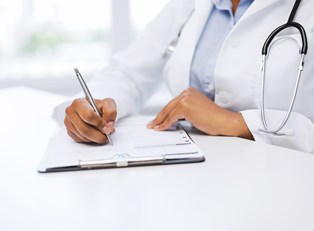Blood clots are part of a body's helpful, lifesaving defense system, when they are working appropriately. Though blood is designed to flow freely and continuously for an entire lifetime, blood clots should form in order to stop one from bleeding to death. Clotting is triggered when blood comes into contact with certain substances, which are called thrombogenic. Blood clots are essential to stop the bleeding from an injury, but there are also harmful clots that can cause a heart attack or stroke. Blood clots also may form when for various reasons blood fails to flow properly, such as in atrial fibrillation, when blood pools in the heart due to an abnormal heart rhythm. A number of conditions can cause blood clots to develop in critical locations, such as the lungs and brain, they require medical attention. They may form inside small veins near the skin's surface or in larger, deeper veins. When a clot breaks away from the vein or arterial wall, it causes damage elsewhere in the body, particularly the heart and the brain. A blood clot is a symptom of a larger condition. There are many potential causes of blood clots, and one should work with a healthcare professional for an accurate diagnosis.
Symptoms of Blood Clots
Although a blood clot is a symptom of a larger condition, there are a few signs and symptoms of blood clots that one can beware of if he or she is at risk. Superficial phlebitis, or a clot formed in the small veins close to the skin's surface, may result in localized redness, pain and swelling. It this type of blood clot rarely causes complications and requires minimal treatment. Deep vein thrombosis, or a clot formed inside the larger, deeper veins, can cause more severe and widespread symptoms in the affected area, usually the leg, and consequently may cause more serious damage to the body. Clots that break away from a deep vein thrombosis and travel to the lungs may cause a life-threatening clot in the lungs, called pulmonary embolism (PE). More general symptoms of blood clots include shortness of breath, squeezing pain in the center of the chest lasting more than a few minutes, pain extending to the shoulder, arm, back, teeth or jaw, sudden weakness or numbness in the face, arm or leg, aphasia (sudden difficulty speaking or comprehending speech) or sudden blurred or double vision. One should seek emergency care if experiencing any of these symptoms of blood clots.
Blood Clot Treatment
Blood clot treatment can take many forms, depending on the type and cause of clotting taking place. Anticoagulant medications (blood thinners), such as heparin and warfarin, are often used to inhibit the formation and growth of existing clots. They slow the time it take for blood to clot and can prevent further clotting. They do come the potential of uncomfortable and sometimes serious side effects, as well as the need for frequent blood testing. There are some self-care measures on can take to reduce the risk of developing blood clots. One can try to avoid sitting for long periods. For example, if traveling by airplane frequently, walking the aisle periodically will promote circulation. After a surgery or prescribed bed rest, the sooner one begins to move again the better. Do not needlessly delay physical motion because it could cause more harm down the road. However, do not rush into activity either. If unsure, consult with a physician for the best course of action. More generally speaking, one can alter his or her lifestyle and reduce the risk of blood clotting by losing weight, lowering high blood pressure, quitting harmful habits such as smoking, and start to exercise regularly.



